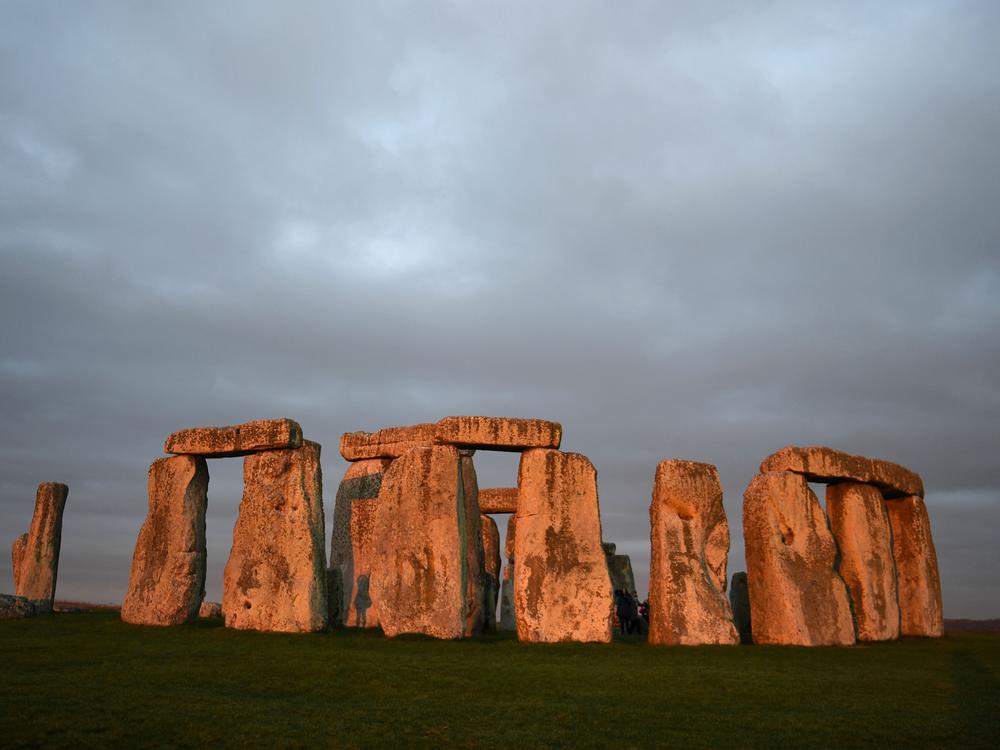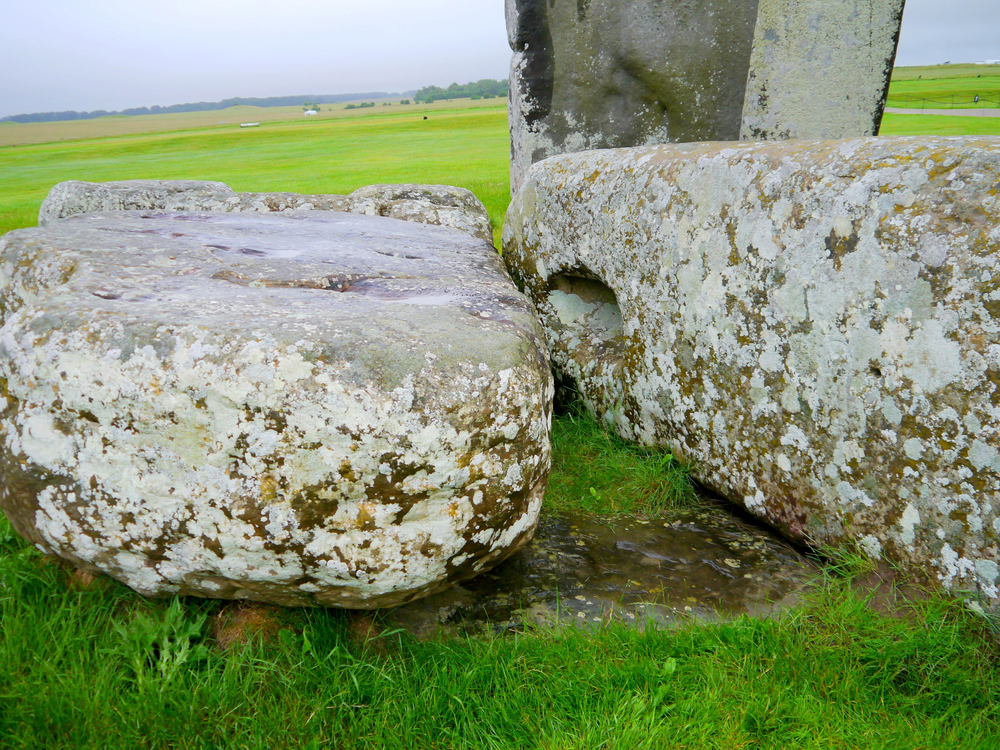Section Branding
Header Content
Researchers say they've found the surprising source of a key piece of Stonehenge
Primary Content
Researchers say they’ve tracked down the origins of Stonehenge’s so-called “Altar Stone,” the monolith at the center of one of the world’s most mysterious monuments.
The purpose of the prehistoric structure in southern England has long been an enigma, though scientists have in recent years been able to determine where most of its stones came from: The upright sarsen stones have been traced to the nearby Marlborough Downs area in England, while the smaller bluestones have their roots in Southwest Wales.
“The Altar Stone was the last odd one out,” says Anthony Clarke, a Ph.D. student at Australia’s Curtin University and the lead author of a new study about the stone's origins published this week in the journal Nature.
Clarke, who studies geochronology (the science of dating the age of rocks), has always been fascinated by Stonehenge in particular — he grew up on a farm in southwest Wales, where some of its stones are from.
The six-ton Altar Stone itself — which today lies broken on the ground, partially covered by two other stones that are believed to have collapsed onto it — was long thought to have come from South Wales, but research published last year effectively ruled out that possibility.
Clarke connected over email with Nick Pearce, one of the Aberystwyth University researchers who had worked on that study, and took him up on his offer to send over some samples of the Altar Stone for analysis.
That involved examining the age and chemical characteristics of each of the mineral grains that came together to form the sandstone, Clarke explains.
“When you take this profile — this fingerprint, in a way — of the rock, we can forensically compare it to potential source areas all over the U.K.,” he says. “And when we did that … it was strikingly similar to Orcadian Basin sedimentary rocks.”
That was surprising, in no small part because Orcadian Basin is in northeast Scotland — over 450 miles away from the site of Stonehenge.
“When we first got the first kind of batch of data, I looked at it and I said, ‘There’s no way that this can be so distinctly Scottish,’” Clarke adds. “So we did more analysis … and time and time again, it was just so distinctly not from southern Britain, and it pointed towards it coming from this Orcadian Basin. It's just remarkable.”
The stone's Stone Age journey could be proof of a high level of societal organization
The findings suggest that the roughly 12,000-pound, 16-foot long rock somehow traveled hundreds of miles from Scotland to England, well before the invention of the wheel. (Archaeologists suspect it was installed in Stonehenge sometime around 2620 B.C. to 2480 B.C.)
As Clarke puts it, just driving from North Scotland to England is a relatively arduous trip these days.
“Spare a thought for our Neolithic ancestors, where the heavily forested landscape, rivers, bogs and mountains — it would have been formidable, if not impossible,” he adds.
It’s not clear why the stone was taken so far away, or how long the process took. But there are a few theories as to how it made the journey.
One is that vast walls of ice glaciers brought the stone southwards, but Clarke says ice-sheet reconstructions show they would have actually moved it in the opposite direction.
He and the other researchers think the most likely explanation is that it was brought to England by boat, especially since there is already evidence of a Neolithic marine trading network of things like tools and cattle. If so, he says it would point to a “rather advanced and skilled society.”
“Such routing demonstrates a high level of societal organization with intra-Britain transport during the Neolithic period,” reads the team's study.
The six researchers, based in Australia, Wales and England, spent years working together virtually on the study. They only met in person for the first time this week — at Stonehenge, of course.
“It was just weird, I guess, when you talk to people through a screen for several years and then you finally meet them and you're here at this very special place,” Clarke says. “And the fog was rolling over the hills, and it was very quiet and it was cold, and it was quite a surreal experience.”
While the precise details of the Altar Stone’s journey may be lost to time, Clarke says, these findings raise plenty of other questions about the era it came from — some of which future archaeologists will hopefully be able to answer.
In the meantime, Clarke, who is 26 and finishing up his Ph.D., will be setting his sights on the plenty of other tools and stones — whether at Stonehenge or beyond — that still need tracking down. Dating geological material can put much of human history in perspective, he explains.
“A human lifetime is 100 years. But the Altar Stone has sat there for thousands of years, the grains within the Altar Stone have sat there for several orders of magnitude more, 3,000 million years,” he adds. “It’s just this idea of time and adding page numbers to Earth’s history.”



